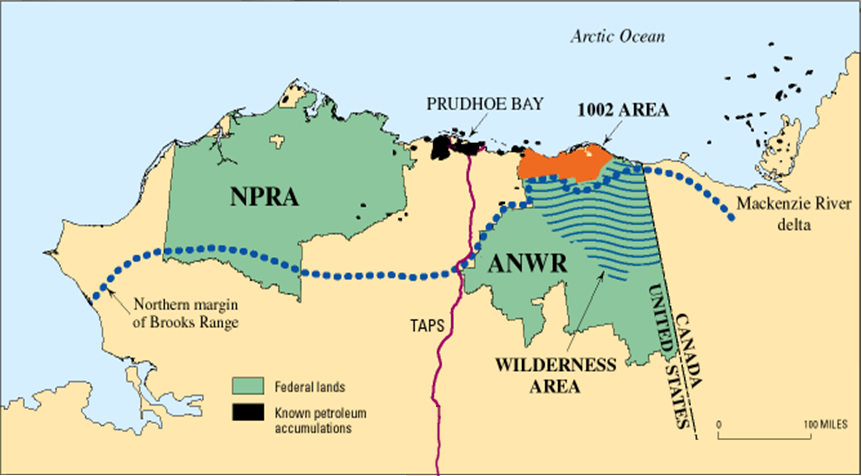Prudhoe Bay,

Above is a map of northern Alaska showing the Prudhoe Bay oil reserve.
Oil reserves in Prudhoe Bay were discovered in 1968 in northern Alaska. The US Department of the Interior conducted an environmental impact statement of the proposed Trans-Alaska Pipeline System in 1972 and the Trans-Alaska Pipeline Authorization Act that allowed construction was signed by President Nixon a year later. The objective of the Act is to lessen American dependence on foreign oil and to increase availablility and access to domestic oil sources in order to provide more crude oil for domestic use.
The 48-inch diameter, 800-mile above-ground pipeline crosses 34 major rivers, three mountain ranges, and 800 mountain streams, causing major construction challenges. Despite these major environmental concerns due to the fragility of the Arctic ecosystem, the need for domestic oil and economic growth overshadowed the concern for the potential destruction of the Alaskan wilderness. Construction began in 1974 and was finished and pumping oil by July 1977. The oil is extracted in the frigid Prudhoe Bay and transported through the pipeline to the significantly warmer Port of Valdez located in southern Alaska. Once at Valdez, it is a much easier task to transport the oil to other US refineries via tankers, ships, and other methods of transportation.
The idea of a pipeline was considered to be the most economical and safe, though that has hardly been the case since the construction. The Arctic has proved to be a very challenging environment to extract and transport oil, especially regarding hot crude oil flow and its impact on the Alaskan permafrost. Since the early 2000s, there has been no short supply of issues that threaten the success of the pipeline and the safety of the surrounding environment. Problems include corrosion, and some places of the pipeline walls have been reduced to half their original thickness, causing the need for the replacement of over eight miles of the pipeline. In addition, there are often shutdowns, spills, fires, and flow reductions that have dramatically effected the environment.
Environmental Issues: Essential Primary Sources. "DOI Trans-Alaska Pipeline Authorization Act." GREENR. http://find.galegroup.com/grnr/infomark.do?&source=gale&idigest=6f8f4a3faafd67e66fa023866730b0a1&prodId=GRNR&userGroupName=bucknell_it&tabID=T016&docId=CX3456400114&type=retrieve&contentSet=EBKS&version=1.0.


